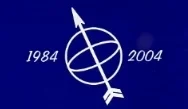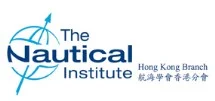May95
archive > Log > Log1995
Hong Kong

COSCO-HIT visit

In January members and guests were greeted by Ken Clarke, our host, for a COSCO-HIT branch outing.
We learned that the COSCO-HIT Terminal Hong Kong is situated on the newly reclaimed land which now joins Stonecutters Island with Kwai Chung container terminals at the south-eastem entrance to the Rambler Channel. The area is by definition called Kwai Chung Container Terminal 8 East and has a wharf frontage of 640 metres for container ships, a 98 metre feeder vessel/barge wharfage in addition to a further 350 metres of barge wharfage. This latter is essential owing to the considerable amount of midstream and transhipment work in Hong Kong and the Pearl River Estuary.
The terminal is managed by a 50/50 joint venture management between China Ocean Shipping (Group) Company (COSCO) and Hong Kong International Terminals Limited (HIT). The terminal was designed to have a throughput of 800,000 TEU, however, already this figure has been exceeded by 40%. It is understood that transhipment accounts for 65% of the operation.
Members were then taken to the nerve centre of the whole operation, the HIT control tower. This complex is generally termed HIT's terminal management system. Banks of computers with video screens scan the whole container yard and the loading operation.
As land is at a premium in Hong Kong, in order to utilise ground space to its optimum, the containers are stacked in blocks eight containers high in the 119 hectare yard, which has a storage capacity for 75,000 TEU of containers including 1,600 refrigerated containers.
The whole operation commences with a profile plan of the ship sent in by the ship agent to the terminal management system which is fed into the computers of the ship planning system through an electronic data interchange. This stores the container plans of the ships. Details of the containers are also sent in by the vessel's agent and a loading sequence is then planned out. The ship's bay plan can be zoomed in steps so that even the details of each container can be seen.
Should the containers enter the yard by road a clever security system is brought into action. At the in-gate the truck driver swipes a smart card, giving details of the truck, into an electronic scanner. He also places the bar card documents giving details of the shipment into a second scanner. Details of truck and container are immediately up-loaded into the Terminal computer. At the out-gate the truck driver again inputs a smart card into the scanner and keys in his personal identity number. The computer checks that the driver is employed by the truck owner before issuing a gate receipt. At the in-gate the container is also scanned by a video camera and a general survey of the container is made. Obviously defective containers are rejected, but those that have minor damage are sent to the terminal's temporary repair section. Container repair details are punched into the computer system. Rubber tier gantry stackers pick up the container and deposit it in the allocated stack. This is overseen by the operation monitoring system which is part of the terminal management system. As with the ship planning system everything is graphically presented from a general overview of the yard. By zooming down, the stacks and even the individual details of each container can be seen on the video monitors. Colour coding is used so that ship identity and even bay containers can be picked out. Throughput has vastly increased and in order to combat the ever increasing pressure, 24 new rail mounted gantries are to be introduced this year.
Contributed by Captain E. Edmondson, MNI
Seaways May 1995

